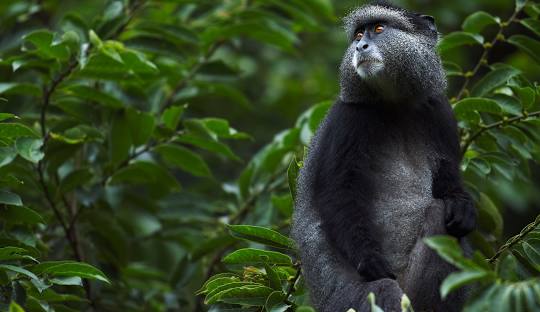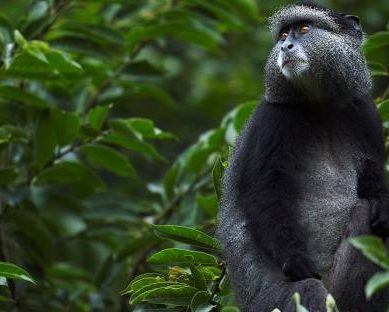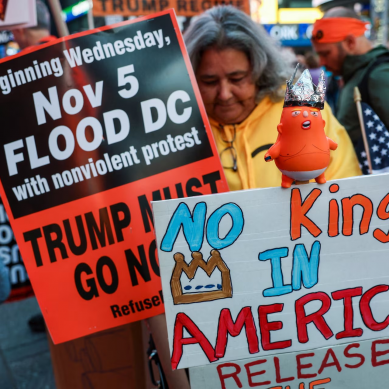
Kenya is one of the world best tourist destinations that pulls in millions of visitors every year. It is a preferred destination for adventure, culture, world heritage sites, wildlife safaris, mountain climbing and bird watching.
Data collected and collated by the ministry of tourism show that tourism in Kenya is the third largest source of foreign exchange earner, behind diaspora remittances and agriculture.
Kenya has over 55 national parks, game reserves and sanctuaries. Many foreigners who visit the country fall in love with its incredible beauty and have decided to stay permanently. Some features tourism in Kenya include beach tourism, eco-tourism, cultural tourism and sports tourism.
For years, Kisumu County has been synonymous with the glimmering waters of Lake Victoria, its breath-taking sunsets and the vibrant cultural festivals, yet beyond these iconic attractions lies a variety of untold stories and hidden gems waiting to be explored.
As part of World Tourism Week 2025, whose climax is celebrated every September 27 the county government took stakeholders and journalists on a daylong tour to uncover and celebrate these yet-to-be exploited treasures, offering these local tourists an opportunity to experience these new gems in the Kisumu county.
On a leafy hillside in Kiboswa, Kisumu West Sub-County, just a kilometre on the Kisumu–Kakamega Highway, Valley View Resort opens up to spectacular views of the Nandi Hills.
Their rolling ridges stand majestic against the morning sky, glowing as the first light of dawn spills across the horizon. Tourists, both local and international, have been flocking the spot to catch this spectacle.
“The location is beautiful and serene, with breath-taking views. Its cool breeze is cleaner, more tranquil and offers relief from the hustle and bustle of Kisumu City,” a resident, Golan Malakwen, says.
For many, sunrise here is not just a sight to behold, but an experience of peace and tranquillity for spiritual and emotional regeneration.
Just five kilometres from this site, perched atop Kogony Hills in Nyahera, Odili Gardens offers a rejuvenating and different perspective. From its cliff edges and lush lawns, Kisumu City stretches out below like a live carpet with endless blue waters of Lake Victoria glistening in the distance.
“It’s one of Kisumu’s most epic sunset spots,” John Onyango, a guide at the facility, says. Families, couples and friends spread their picnic mats, take leisurely walks or simply sit and soak in the beauty of the sun on this epic scenery,”
Onyango notes that travellers are increasingly seeking authentic, culture-rich experiences rather than sticking only to traditional tourism offerings.
“If you want moments that create lasting memories, Odili Gardens provide exactly that, it’s the prettiest place to chill out with your loved ones and enjoy the cool lake breeze.”
Not far from the Kisumu City central business district, lies another jewel, the Kisumu Impala Sanctuary. Tucked along the lakeshore and managed by the Kenya Wildlife Service (KWS), the sanctuary is both a tranquil escape and a rehabilitation centre for wildlife rescued from human–animal conflict.
Here, impalas roam freely alongside zebras and playful monkeys, while lions, cheetahs, leopards and ostriches are caged up for the security of the visitors.
“The sanctuary offers a unique ‘lakeshore walk with impalas,’ where visitors encounter both free-ranging and caged animals,” explains Farida Salim, Kisumu’s County Executive Committee Member (CECM) in charge of Trade, Tourism, Cooperatives, Industry and Marketing
“It’s unfortunate that some of us are growing old without ever visiting these attractions,” she said, adding, “We need to start appreciating what we have here in Kisumu before seeking experiences elsewhere.”
David Kones from KWS Nyanza Region sees these hidden gems as central to the future of the western Kenya tourism circuit.
“Kisumu has a lot to offer. Through innovation, we can strengthen conservation and tourism at the same time,” he says. H said there is a need to focus on cultural tourism, ecotourism and adventure tourism that connects visitors to local communities and nature.
The government is already investing in infrastructure and restoration projects to diversify Kenya’s tourism products.
Initiatives like the Magical Kenya Signature Experience Collection, launched by the Kenya Tourism Board in 2019, have positioned the country as a destination of diverse, unique experiences.
On his part, Robinson Mwenda, the Tourism Regulatory Authority (TRA) Nyanza Regional Deputy Director, highlighting the sector’s job-creation potential for the youth, but cautions on maintaining quality on products and services.
“We can market aggressively, but if the product on the ground doesn’t meet the visitor’s expectations, tourists will not return,” he warns.
KWS tourism warden Pauline Okode echoes the call and appealed to investors to seize emerging trends.
“Travellers are keen to move away from traditional destinations. They want something new, authentic and memorable. We need to package our hidden gems to appeal to these different segments.”
The enchanting birds arena nestled in the lush KaJok’Oby Arboretum in Seme Sub-County, is yet another hidden jewel and nothing short of a paradise for bird enthusiasts.
Ornithologist (bird watcher) Gabriel Odhyambo speaks of this haven with quiet reverence.
“The Birds Arena is a living gallery,” he explains, “where the grandeur of the majestic peacock meets the delicate charm of the tiny Serama bird, and where even the mystical Silkie chicken with its striking black meat tells a story of nature’s endless surprises.”
Here, visitors encounter an extraordinary feel of ornamental treasures including peacocks, budgies and cockatiels, brahmas and polish chickens, turkeys and doves, geese, and guinea fowls.
Each species reveals a unique narrative in the grand tapestry of avian life. “The diversity we nurture at the arena is not just about beauty,” Odhyambo reflects.
“It is a living lesson, a demonstration of the remarkable range of birdlife from the largest to the smallest, including rare wonders like the Silkie. It is an invitation for tourists to learn, explore and ultimately celebrate nature itself.
World Tourism Day (WTD) is commemorated annually on September 27 to raise awareness among the international community of the importance of tourism and its social, cultural, political and economic value.
On September 27, 1970, the Charter of the World Tourism Organization (WTO) was adopted but it was until 10 years later in 1980 that the date was officially established and celebrated to mark the vital role played by the tourism sector in the economies of the world.
But, sometimes this crucial sector has been faced with serious challenges, thanks to climate change.
In 2020, this sector was brought to its knees due to the advent of the Covid-19 pandemic as Kenya and ended the entire world, literally locked up their borders to prevent further spread of the pandemic.
It is also worth noting that Kenya is still recovering from a drought that ravaged parts of the country for five consecutive seasons, with inadequate rains between 2021 and 2022, which severely affected people and animals, including livestock.
This was followed hot on the heels by a devastating flood that ravaged the country, also causing massive damage to wildlife, coupled with loss of both lives and property.
The worst-affected ecosystems by the drought were home to some of the Kenya’s most visited national parks, reserves and conservancies including the Amboseli, Tsavo, Laikipia and Samburu conservancies.
In November 2022, the Kenya Wildlife Service reported that it had lost 205 elephants – listed as an endangered species – 512 wildebeests, 381 common zebras, 51 buffalos, 49 Gravy’s zebras and 12 giraffes in nine months of that year alone to the wrecking drought. Therefore, seeing the tourism sector picking up is a big relief to all industry players.
It’s estimated that more than five million Kenyans were affected by the drought in more than 24 counties, where more than 2.4 million livestock and wildlife succumbed to the drought. Worse still, some of these communities were also affected by floods that followed soon after the devastating drought.
However, things are now looking up in the sector as data accrued by the ministry of tourism, show that tourist arrivals hit a new record high at 2.09 million in 2023, indicating a flourishing tourism industry in the country in the post-Covid era, thanks to concerted efforts the government has been putting in place, while marketing Kenya as the preferred destination for international travellers, seeking to explore what our motherland has to offer.
Kenya’s projection for tourist arrivals is three million tourists in 2025, following a steady recovery of the sector after the Covid-19 pandemic that brought the sector to its knees in 2020 following a global total lockdown.
Kenya has come up with the National Tourism Strategy (NTS), a critical document that will provide the roadmap for acceleration of tourism growth in the country. The ministry of tourism will now partner with county governments to diversify tourism opportunities to promote meetings, incentives, conferences and exhibitions (MICE) tourism.
According to ministry to ministry of tourism data, globally international tourists’ arrivals grew by 34 per cent in 2023, compared to 2022, representing an 88 per cent recovery of pre-pandemic numbers, even as Africa recovered 96 per cent to the pre-Covid pandemic levels
At the same time, Kenya witnessed a notable surge from 1.483 million international visitors in 2022 to 2.086 million in 2023, representing an impressive growth of 31.5 per cent.
In the same year 2023, inbound tourism earnings grew up to Ksh352.54 billion, compared to Ksh268.09 billion in 2022, indicating a growth of 31.5 per cent.
Kenya Tourism Board data show that Kenya’s tourism industry reported significant growth in the first six months of 2024, with revenue reaching Ksh142. 5 billion, with the country receiving 1,027,630 international visitors, marking a 21.3 per cent increase from the same period in 2023.
- A Tell Media / KNA report / By Mabel Keya-Shikuku and Robert Ojwang’







